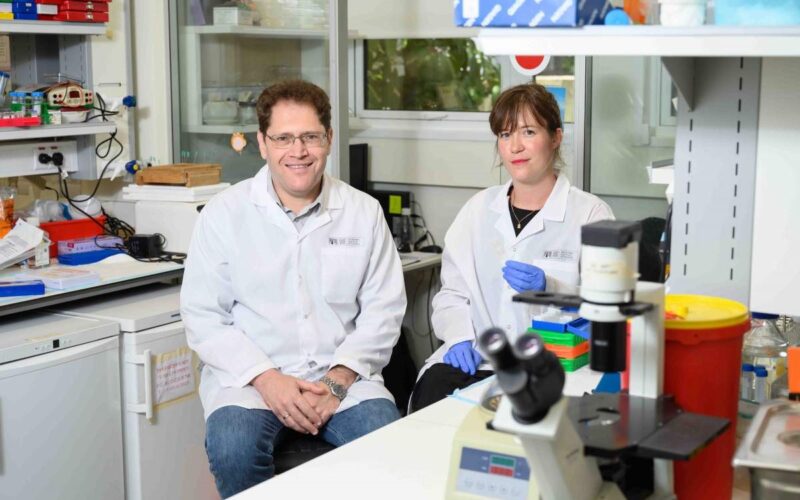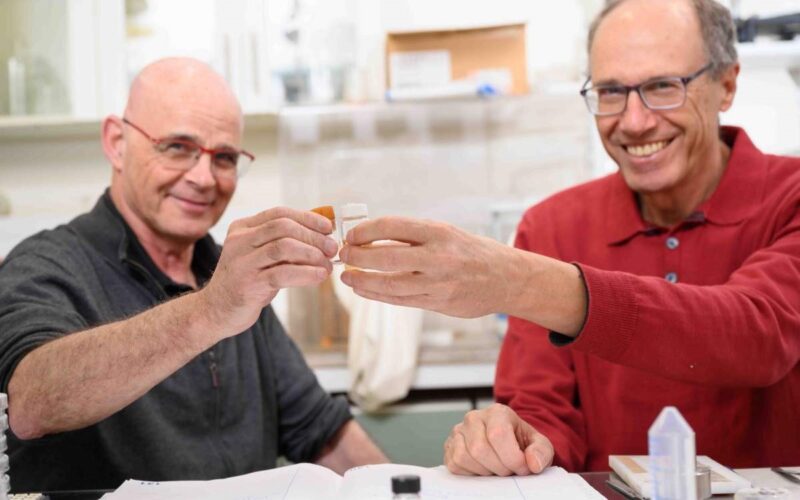
November 29, 2017
Autism typically involves the inability to read social cues, often associated with visual difficulty in interpreting facial expression. New research from the Weizmann Institute of Science, reported this week in Nature Neuroscience, suggests that the sense of smell may also play a central role in autism, observing that odours which carry social cues seem to affect volunteers on the autism spectrum differently.
Overall the researchers found that people on the autism spectrum have different – and even opposite – reactions to odours produced by the human body. These odours are ones that we are unaware of smelling, but which are, nonetheless, a part of the nonverbal communication that takes place between people, and which have been shown to affect our moods and behaviour.
The Weizmann findings may provide a unique window on autism, including, possibly, on the underlying developmental malfunctions in the disorder.
Researchers in the lab of Professor Noam Sobel in the Institute’s Neurobiology Department investigate, among other things, the smells that announce such emotions as happiness, fear or aggression to others. Although this sense is not our primary sense, as it is in many other mammals, we still subliminally read and react to certain odors.
For example ‘smelling fear’, even if we cannot consciously detect its odor, is something we may do without thinking. Since this is a form of social communication, Sobel and members of his lab wondered whether it might be disrupted in a social disorder like autism.
To conduct their experiments, Sobel and lab members Yaara Endevelt-Shapira and Ofer Perl, together with other members of his lab, devised a series of experiments with a group of participants on the high functioning end of the autism spectrum who volunteered for the study.
To begin with, the researchers tested the ability of both autistic and control volunteers to identify smells that can be consciously detected, including human smells like sweat. There was no significant difference between the groups at this stage, meaning the sense of smell in the autistic participants was not significantly different from that of controls.
Two groups were then exposed to either to the ‘smell of fear’ or to a control odor. The smell of fear was sweat collected from people taking skydiving classes, and control odour was sweat from the same people, only this time it had been collected when they were just exercising – without feeling fear.
This is where differences emerged: Although neither group reported detecting dissimilarities between the two smells, their bodies reacted to each in a different way. In the control group, smelling the fear-induced sweat produced measurable increases in the fear response, for example in skin conductivity, while the everyday sweat did not. In the autistic men, fear-induced sweat lowered their fear responses, while the odour of ‘calm sweat’ did the opposite: It raised their measurable anxiety levels.
Next, the group created talking robotic mannequins that emitted different odours through their nostrils. These mannequins gave the volunteers, who were unaware of the olfactory aspect of the experiment, different tasks to conduct. Using mannequins enabled the researchers to have complete control over the social cues – odour-based or other – that the subjects received.
The tasks were designed to evaluate the level of trust that the volunteers placed in the mannequins – and here, too, the behaviour of autistic volunteers was the opposite of the control group: They displayed more trust in the mannequin that emitted the fear-induced odor and less in the one that smelled ‘calmer’.
In continuing experiments, the researchers asked whether other subliminal ‘social odours’ have a different impact in autism than in control groups. In one, the volunteers were exposed to sudden loud noises during their sessions while at the same time they were also exposed to a potentially calming component of body-odor named hexadecanal. Another automatic fear response – blinking – was recorded using electrodes above the muscles of the eye. Indeed, the blink response in the control group was weaker when they were exposed to hexadecanal, while for those in the autistic group this response was stronger with hexadecanal.
In other words, the autistic volunteers in the experiment did not display an inability to read the olfactory social cues in smell, but rather they misread them. Sobel and his group think that this unconscious difference may point to a deeper connection between our sense of smell and early development.
Research in recent years has turned up smell receptors like those in our nasal passages in all sorts of other places in our bodies – from our brains to our uteri. It has been suggested that these play a role in development, among other things. In other words, it is possible that the sensing of subtle chemical signals may go awry at crucial stages in the brain’s development in autism.
“We are still speculating, at this point but we are hoping that further research in our lab and others will clarify both the function of these unconscious olfactory social cues and their roots in such social disorders as autism,” concluded Sobel.
Professor Noam Sobel’s research is supported by the Azrieli National Institute for Human Brain Imaging and Research, which he heads; the Carl and Micaela Einhorn-Dominic Institute for Brain Research, which he heads; the Nadia Jaglom Laboratory for the Research in the Neurobiology of Olfaction; the Adelis Foundation; the late H. Thomas Beck; the Rob and Cheryl McEwen Fund for Brain Research; the Mike Rosenbloom Foundation; European Research Council. Professor Sobel is the incumbent of the Sara and Michael Sela Professorial Chair of Neurobiology.






